Your Guide to Better Well-being
Stanford WELL for Life



It is a great pleasure to share Your Guide to Better Well-being with everyone who is interested in cultivating and improving their well-being. Having a higher level of well-being can improve your health and sense of fulfllment.
For the past eight years, the Stanford WELL for Life (WELL) study has been investigating how life experiences, emotions, and biology afect well-being in people from diferent cultures. Based on data from over 32,000 WELL participants from fve countries, we have defned the domains/dimensions of well-being, designed methods for measuring well-being, and identifed factors associated with well-being.
In this guide, you will fnd an overview of well-being and the WELL study and learn about the eight domains and the eight lifestyle and health factors linked to well-being. We also provide practical steps you can take to enhance your own well-being. These tips are based on results from the WELL study and other published studies, which we note with references. (See more about references on page 49.)
I would like to thank the WELL participants for so generously giving their information, their insights, and their time to advance the science of well-being.
I also thank the WELL curation team, including our faculty, expert consultants, analysts, research assistants, writers, and artists, for their tireless eforts to create this marvelous guide so that all may enjoy and beneft.
We dedicate this guide to all the Stanford WELL for Life participants, who have done so much to help others improve their well-being.
This guide is just the beginning. We will continue our well-being research and will share what we learn with you again in the future.
With gratitude,

Ann Hsing, PhD Professor of Medicine
Stanford
Prevention Research Center
Principal Investigator, Stanford WELL for Life
Well-being has multiple dimensions, including your social relationships, your responses to life’s challenges, your physical health, and several aspects of your mental health.1 Your wellbeing can fuctuate over time with changes in your personal circumstances and as you move through diferent life stages.2
When your well-being is good, you feel fulflled, are content with your life, and enjoy daily activities despite challenges. Good well-being makes it easier to cope with setbacks and sadness, manage stress, perform at your peak,3 and build strong relationships.4
Good well-being is linked to better health as you age,5 a lower risk of some diseases,6,7 and a longer, more satisfying life.5,8 Studies of well-being like Stanford WELL for Life (WELL) are investigating these and other benefts of well-being.1,9-13

WHAT IS STANFORD WELL FOR LIFE?
Stanford WELL for Life is a scientifc study that investigates how life experiences, emotions, and biology afect well-being in people from diferent cultures.14-25
There are currently over 32,000 participants from fve countries: the United States, China, Taiwan, Singapore, and Thailand. This guide focuses mainly on what WELL has learned from U.S. participants.
WELL’s ultimate aim is to develop personalized methods to improve well-being. To do this, WELL researchers have identifed and are studying:
• Domains of well-being, which are dimensions, or areas of life, that make up your well-being.
• Factors linked to well-being, which include lifestyle, health factors, and other personal characteristics that are associated with your well-being.
WHAT ARE THE DOMAINS THAT MAKE UP YOUR WELL-BEING?
The WELL study found that well-being is made up of the following domains:


WHAT LIFESTYLE AND HEALTH-RELATED FACTORS ARE LINKED TO HIGHER OR LOWER WELL-BEING?
Higher well-being
• Good sleep
• More physical activity
• Time spent in nature
• Healthy diet
• Contemplative practices
• Rich, diverse gut microbiome
• Balanced body constitution (Traditional Chinese Medicine)
Lower well-being
• Depression (diagnosed by a doctor)
• Anxiety
• Stress
WHAT DEMOGRAPHIC FACTORS ARE LINKED TO WELL-BEING?
WELL fndings show that better overall well-being is linked with having a higher income, being 50 or older, and having a spouse or living with a partner. Studies of other populations have reported that income level, age, employment status, marital status, sex, and education level can be associated with well-being.26,27
Some of these links may be due to other factors that infuence well-being. For example, lower income and unemployment can decrease well-being by making it harder to get good nutrition, adequate physical activity, and high-quality sleep and by increasing depression, stress, and anxiety.
No matter what your current demographic factors are, there are ways for you to strengthen and maintain your well-being.
HOW CAN YOU MEASURE WELL-BEING?
You can take WELL’s 42-question survey at med.stanford.edu/wellforlife to assess your well-being. The survey scores each of the eight domains and then averages them together for an overall WELL score.
Your WELL score can change over time, so take the survey yearly to track changes in your well-being.
HOW CAN THIS GUIDE HELP YOU IMPROVE YOUR WELL-BEING?
Explore the sections on the WELL domains and factors linked to well-being for background information and evidence-based tips for improvement. You can also use your WELL domain scores to identify the areas of life you may want to work on the most.


These tips address the factors that WELL found are most strongly linked to well-being.
Eat lots of fruits, vegetables, lean proteins, and whole grains. Limit added sugars, salt, fried foods, alcohol, and sweetened beverages.28,29 Avoid ultra-processed foods; growing evidence suggests they have many harmful efects on both mental and physical health.30-32
If you do not already exercise regularly, increase physical activity slowly. Do something you enjoy,33 set specifc goals, and track your activity.34-36 Combine cardiovascular and muscle-strengthening exercises.33 Listening to music while you exercise improves performance and motivation.37
Go to bed and wake up at about the same time each day. Do not nap more than 20 minutes during the day. Avoid screens, large meals, and cafeine close to bedtime.38 Instead, relax in a warm bath or read a book. Regular exercise also helps you sleep soundly.39
Skip the gym and exercise outdoors.40 Visit a park or “blue space”—lakes, rivers, or the ocean.41 Slow down and observe nature with all your senses. If you cannot get outside regularly, add plants, aromas, and images of the natural world to your indoor spaces.42,43
For many people, exercise works as well as medication to relieve symptoms of depression44,45 and can help prevent anxiety from turning into a lasting problem.46 Look for positives in life’s challenges—shifting your focus helps you build resilience to stress.47
Contemplative practices such as yoga, meditation, deep breathing, and tai chi encourage mindfulness, which is paying attention to the present moment without judgment.48 Having a mindfulness practice is one of the most efective ways to enhance well-being.49-51
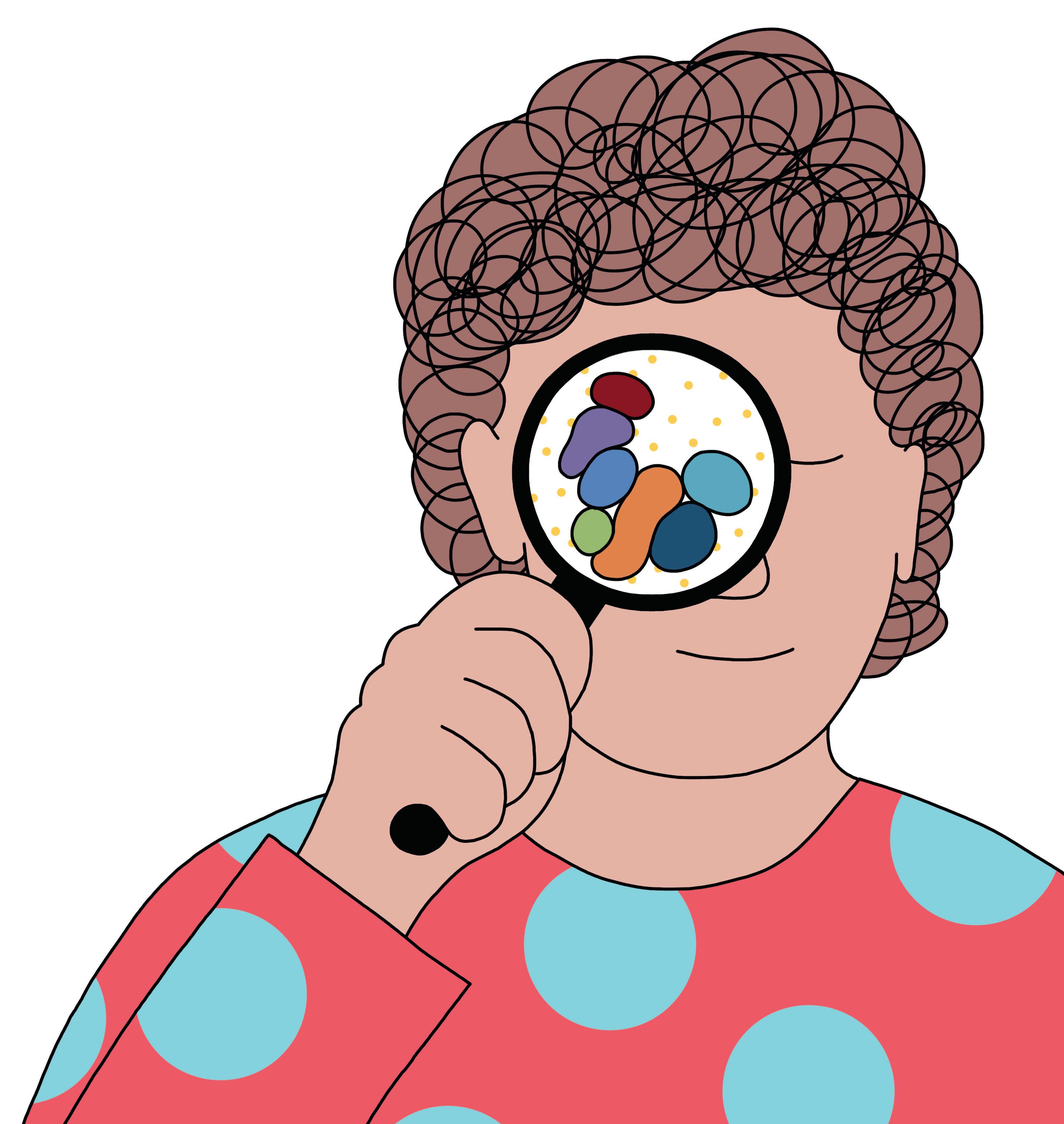
Sense of self—knowing who you are—is a key dimension of well-being. Sense of self is your perception of your personal abilities, interests, personality, values, and confdence and what motivates you.
IS YOUR
Your sense of self includes these interrelated elements that all impact your well-being:
• Self-esteem—your perception of your worth1
• Self-satisfaction—how satisfed you are with yourself2
• Self-acceptance—how well you accept both your positive and negative qualities3
• Self-compassion—your ability to treat yourself kindly when you experience difculties4
Having a strong sense of self means you know and accept who you are and feel worthy and confdent.
HOW DOES YOUR SENSE OF SELF AFFECT YOUR WELL-BEING?
Knowing who you are helps you make choices that align with the life you want to live. With a weaker sense of self, you may be more vulnerable to outside infuences, have a stronger inner critic, and be more susceptible to anxiety or depression, all of which afect your well-being.1

• Take care of yourself. Get regular exercise5 and enough sleep,6 eat a healthy diet,7 and spend time in nature.8
• Accept yourself as you are.3 Keep a daily journal to refect on your thoughts and emotions.9 Do not judge yourself or your thoughts, just notice your feelings. Practice mindfulness.10 Reframe negative situations to see opportunities.3
• Build your self-esteem.1 Learn to observe and regulate your emotions.11 Replace negative beliefs about yourself (“I am not worthy or good enough”) with more positive beliefs (“I can do this”). Try cognitive behavioral therapy with a professional therapist.12
• Improve self-satisfaction. Set and achieve personal goals.13 Write down three things you are grateful for each day. Connect and contribute to something bigger than yourself like a cause that you care about.14
• Develop self-compassion.4 Do not judge yourself. Instead, face difculties with acceptance, kindness towards yourself, and motivation to do better. Practice a loving-kindness meditation.15 Find self-compassion exercises online at self-compassion .org/self-compassion-practices.
• Spend time with people you want to be like. The people around you help shape your sense of self.16
• Take a social media break. Social media can make you feel bad about yourself or your life. Taking even a one-week break can raise your self-esteem.17
The U.S. WELL study found that, of the eight domains that make up well-being, sense of self had the strongest link with well-being.

Positive emotions are central to your well-being. These emotions infuence your thoughts and even how you feel physically.1 Positive emotions make you feel good, increase your enjoyment of life, boost your productivity,2 and can improve your physical and mental health.1
WHAT ARE POSITIVE EMOTIONS?
Some examples of positive emotions include: happiness, contentment, joy, pride, amusement, inspiration, excitement, enthusiasm, calm, satisfaction, optimism, and gratitude.1,3
You can be excited about something new, joyful about having fun with friends, inspired by beauty, happy when surrounded by loved ones, and content when you feel calm and secure.
HOW DO POSITIVE EMOTIONS ENHANCE YOUR WELL-BEING?
Emotions like love, hope, and optimism can expand what you believe is possible, motivate you to achieve your goals,1,2 and help you manage your negative emotions.4 A positive perspective helps you see setbacks as opportunities for personal growth.5
Positive experiences may increase wellbeing by triggering the release of chemicals in the brain linked to feeling happy, leading to positive emotions.6
• Maintain healthy habits. Get good sleep,6 eat healthy food,7 get regular exercise,8 and spend time in nature.9
• Pursue activities you enjoy, like music,10 reading, photography, sports, pottery, dance, painting, or other hobbies.11
• Cultivate positive emotions to balance negative emotions. Nurture and appreciate positive thoughts daily. Focus on the good by fnding opportunities for growth, concentrating on your strengths, and refecting on what you are grateful for.5
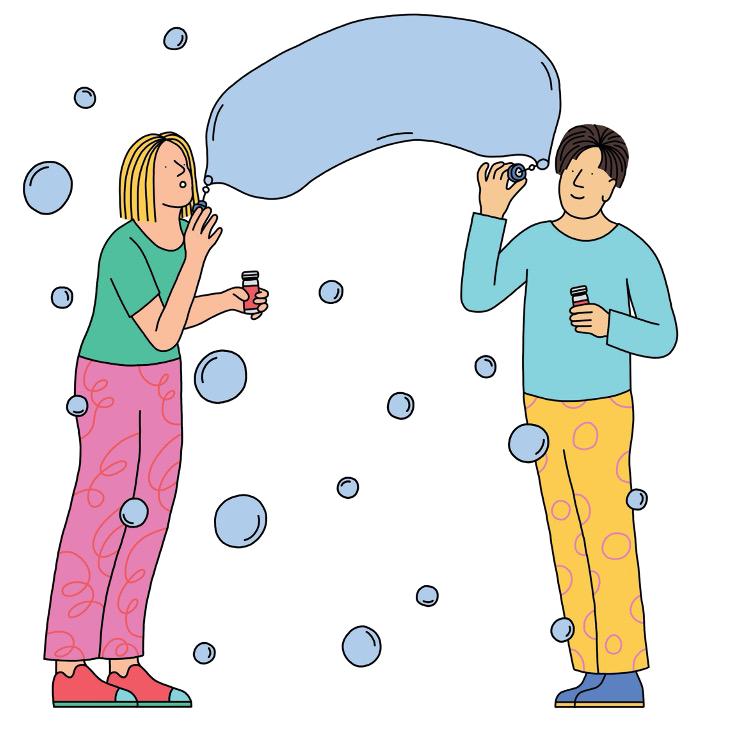
• Practice mindfulness. Try using a guided meditation recording.12
• Engage in spiritual practices. Spiritual or religious experiences can elicit positive emotions like gratitude, awe, love, and peace.13
• Stay connected. Join a group class focused on a favorite hobby or volunteer with a local organization.14
The WELL study found that higher levels of positive emotions are most associated with spending frequent time in nature, not having a history of clinical depression, engaging in contemplative practices (e.g., meditation), and getting good-quality sleep.

Social connectedness can lead to better health1 and a longer life.2 Having social connections, both close and casual, is linked to greater well-being, happiness, feelings of belonging, and a sense of community.3,4
WHAT IS SOCIAL CONNECTEDNESS?
Social connectedness refers to the number and quality of your relationships with other people. Having good social connectedness means that your relationships with others meet your needs for companionship, social support, and belonging.5
HOW DOES SOCIAL CONNECTEDNESS STRENGTHEN YOUR WELL-BEING?
Having strong social connectedness can improve your well-being by:
• Providing companionship
• Introducing you to new ideas and experiences2
• Making it easier to cope with challenges, stress, anxiety, and depression5,6
• Reducing your risk for pain,7 viral illnesses,8 and serious diseases like dementia, heart disease, and depression1
• Increasing your independence in later life and your life expectancy2
• Get enough sleep and exercise. You will have more energy and motivation to maintain and enjoy your friendships and strengthen social bonds.9,10
• Put your phone away during conversations so you can focus on the person in front of you.5
• Spend quality time with family and friends who support you and let them know you are grateful for their presence in your life.3
• Ask for help when you need it. When people support you, it builds their sense of connection to you.11,12
• Support others. Acting with kindness and compassion and providing practical support increases your feelings of connection and purpose.12
• Enjoy nature with friends. Get outside with friends for a walk or picnic. Join a nature or hiking group to meet new people.13
• Hug a friend or family member. Hugs strengthen social bonds, reduce stress and anxiety, and promote well-being.14
• Reconnect with old friends. Most people appreciate hearing from old friends. Send a text, make a call, or reconnect through social media.15
• Meet new people who share your interests. Art workshops, book clubs, religious groups, and sports can connect you with new friends.3
• Widen your circle of casual acquaintances. Chat with your neighbors, co-workers, and people you see in daily life.3,4




Building resilience can help you cope with stress and improve your overall well-being.1
Resilience is your ability to adapt and thrive in the face of challenges, uncertainty, or setbacks. It is the capacity to overcome obstacles and emerge stronger from difcult situations.1
Resilience also is a set of behaviors, thoughts, and actions that can be learned, practiced, and strengthened.2
Resilience provides you with emotional strength to handle difcult situations, so that your well-being can thrive when you face challenges.1 Building resilience helps strengthen your well-being by making you feel more in control of your life and better able to handle stress and challenges.3
• Take care of yourself. Eat a healthy diet4 and get enough sleep,5 exercise,6 and time outdoors.7
• Seek out people who make you feel better. Surround yourself with supportive family, friends, and community and accept their help.8
• Practice mindfulness. Use meditation, prayer, or yoga to reduce stress, foster gratitude, and restore hope.9
• Look for silver linings. Change your perspective and see challenges as opportunities for personal growth.1,10,11
• Accept that change is a part of life. You have control over how you respond to change. How you think afects how you feel.2,10

• Help others. Assisting others can give you purpose and connection.12
• Journal about your feelings. Write just for yourself. It can help you translate a difcult experience into a story that feels more manageable.13
• Express your creativity. Activities like art, music, dance, and singing can boost your confdence and sense of belonging, which are associated with resilience and well-being.14,15
• Get professional help. If you do not know where to start or cannot bounce back on your own, reach out for professional counseling.16,17


Negative emotions and experiences can help you recognize and understand things in your life that are stressful and harmful.1 Managing your negative emotions can help you build resilience and can play a positive role in improving your well-being.2
WHAT ARE YOUR NEGATIVE EMOTIONS AND EXPERIENCES?
Negative emotions and experiences are a normal response to life’s setbacks.1 Some examples of negative emotions include anger, emptiness, guilt, frustration, inadequacy, fear, helplessness, loneliness, depression, feeling overwhelmed, resentment, failure, hopelessness, sadness, and jealousy.3
HOW DO NEGATIVE EMOTIONS AND EXPERIENCES AFFECT YOUR WELL-BEING?
Negative emotions can help you identify problems in your life and motivate you to fnd solutions to improve your resilience, sense of purpose, and personal growth, which are essential aspects of well-being.3 Ignoring negative emotions interferes with your enjoyment of life and makes it difcult to function well.2
• Recognize your negative emotions without judgement. The way you view your emotions can afect your well-being.2-4 Negative emotions are normal. Judging them can make you feel worse.
• Try to have a positive outlook. Acknowledge your negative emotions while actively cultivating your positive emotions.1 Recognize that negative emotions and experiences can lead to personal growth and self-improvement.5
• Develop healthy habits. Get enough sleep,6 eat a healthy diet,7 get regular exercise,8 and spend time in nature.9 Try yoga to help manage negative emotions.10,11
• Practice mindfulness. Try mindful breathing or walking, meditating, reading inspirational writing,12 or jotting down three things you are grateful for.13
• Manage stress and anxiety. Try relaxation techniques.14 Evaluate the truth and helpfulness of your thoughts and consider a diferent perspective.15
• Limit social media. If you notice that you feel worse after using it, consider taking a break from social media and spending less time on it.16
• Problem solve. Write down what is contributing to your negative emotions, list potential solutions, decide on steps to enact the solution, and take action.17
• If you are feeling depressed, do things that give you a sense of pleasure or accomplishment.18 Focus on recognizing, appreciating, and enhancing your positive emotions.19 If needed, seek professional help.20,21
Research shows that a onehour walk in nature reduces brain activity linked to negative thoughts.22

Your sense of purpose and personal growth give your life direction and give you feelings of accomplishment. Both are central to your well-being.
WHAT IS YOUR SENSE OF PURPOSE AND PERSONAL GROWTH?
Your sense of purpose is shaped by your values and passions and gives your life direction.1 It also refects what you want to achieve both in your personal life and in the broader world.2,3 Your sense of purpose is unique and can be afected by your cultural and family background, spirituality, and life challenges.4
Personal growth is achieving your goals by developing new skills and perspectives to improve your mental, physical, social, spiritual, or professional life.5,6
HOW DO A STRONG SENSE OF PURPOSE AND PERSONAL GROWTH AFFECT YOUR WELL-BEING?
Having a strong sense of purpose is consistently linked to better mental and physical health.2 A strong purpose helps you be more resilient to life’s setbacks.7
From adolescence to adulthood to older age, living with a sense of purpose and pursuing personal growth help give your life meaning and fulfllment.8
If you do not yet know what your purpose is, here are some exercises to help you clarify your priorities.1,9
• Make a list of what you value most, such as connections with family and friends, health, education, or helping others. Make another list of what you like to do most in life. Then, consider ways to align these two lists.
• Think about personal qualities, skills, and habits you would like to build.
• Imagine your ideal future. Write a paragraph describing your ideal future career and personal life.
• Prioritize your goals and list specifc steps to achieve those goals. Identify obstacles and ways to overcome them. Make a plan and track your progress.
• Tell friends and family about your purpose and goals to help you stay on track. Social support can also enhance your sense of purpose and well-being.10
• Believe in your ability to learn new things and grow, which can help you succeed.11
Once you have defned your purpose, these practices can help you reach your goals.
• Set specifc goals aligned to your purpose, broken down into small, clear, achievable steps.1,12
• Practice mindfulness and gratitude.13
• Serve your community in ways that best support your sense of purpose in the world.14
• Stay socially connected with friends and family.15

Your physical health and your mental health are strongly linked. They impact each other and your overall well-being. Understanding and taking steps to improve your physical health can help support, sustain, and increase your well-being over time.
Your physical health is the overall functioning of your body, including physical ftness, energy level, and the absence of pain, illness, or injury. Chronic conditions like diabetes, or temporary conditions like the fu or an injury, can negatively afect your health, but there are many actions you can take to increase your physical health and well-being.
Physical health includes many factors that are strongly related to well-being. People who are physically ft have higher levels of brain chemicals associated with happiness1 and experience greater life satisfaction.2 They also sleep better,3 which is linked to higher well-being.
• Start with small steps. Identify realistic goals and specifc actions that you can add into your daily life.4
• Get good sleep. Keep a consistent bedtime routine and wake-up time and limit screen time before bed.5
• Eat a healthy diet. Eat a varied diet with lots of fruits and vegetables and minimize high-calorie, processed foods.6
• Get regular exercise. Find ways to integrate physical activity into your daily life. Move more and sit less.7
• Quit smoking. Even if you have smoked for a long time, quitting smoking greatly improves your physical health.8
• Limit alcohol. Heavy drinkers and those with chronic health conditions should consider stopping or reducing alcohol use.9
• Maintain a healthy weight. Skip short-term diets, which often fail in the long run, and opt for long-term lifestyle changes such as regularly eating a healthy diet and exercising.10
• Manage chronic health conditions. Seek medical care to manage chronic health conditions such as diabetes, cardiovascular disease, and cancer.11
• Protect yourself from viruses, injuries, and infections. Maintain good hygiene practices like hand washing.12 Keep your vaccinations up to date.
WELL found that good physical health is most closely linked to vigorous exercise, spending a lot of time outside, and eating a healthy diet.

Almost everyone experiences loneliness from time to time, but feeling lonely often can lower your well-being.1 A 2023 report from the U.S. Surgeon General called loneliness an epidemic that is harming the well-being of individuals and communities.2
WHAT IS LONELINESS?
Loneliness is the painful feeling that you lack the relationships you want or that you are isolated from those you care about and who care about you. Loneliness depends less on how many social connections you have and more on how you feel about those relationships.3
Some people have few social connections, yet do not feel lonely. Others may feel lonely when they have a partner, family members, or friends but do not feel close to or appreciated by them.4
HOW CAN LONELINESS AFFECT YOUR WELL-BEING?
Loneliness increases negative emotions and can lower your sleep quality and physical health, all of which can decrease your wellbeing.4 Loneliness can also weaken feelings that improve well-being, such as positive emotions,5,6 resilience,6 sense of self, and sense of purpose and personal growth.5,6
Building meaningful social connections can help you feel less lonely and improve your well-being.7
• Nurture your close relationships. Connecting more often with family and friends is linked to reduced loneliness.1 If it is hard to meet in person, stay in touch through regular calls, emails, and texts.8
• Find group activities that interest you. Community centers, libraries, art studios, gyms, and churches ofer classes or programs where you can meet people who share your interests.8
• Widen your social circle. A larger social network gives you more options for meaningful social connections.9
• Expect positive reactions from others. Be confdent knowing that most people want to connect with others.10
• Volunteer. Helping others can lessen your feelings of loneliness and deepen your sense of purpose.11
• Eat a healthy diet and get good sleep and regular exercise. Staying physically healthy can help you stay socially active and promote well-being.12
• Engage in mindfulness, such as meditation, mindful walking, or breathing exercises, which can ease feelings of loneliness13 and improve well-being.14
• Practice gratitude. Feeling grateful is associated with lower levels of loneliness and greater well-being.15
• Be aware of how social media affects you. Relying on social media to connect socially and comparing yourself to others can increase loneliness.16
• Seek treatment for depression and anxiety.17 These conditions make you more vulnerable to loneliness.1 Loneliness also increases your risk of depression.18
• Consider hearing aids if you have hearing loss. Hearing loss makes conversation difcult and can add to loneliness. Hearing aids may help reduce loneliness.19
In a 2024 survey, 30% of adults said they felt lonely at least once a week, and 10% said they felt lonely every day.20



A healthy diet plays a crucial role in your well-being and your physical and mental health.1 What you eat and drink afects your body, mood, and risk of long-lasting health conditions.
WHAT IS A HEALTHY DIET?
A healthy diet emphasizes vegetables, legumes, fruits, nuts, seeds, whole grains, and lean proteins such as fsh, eggs, yogurt, and chicken. It limits added sugars, sodium, red and processed meats, fried and processed foods, alcohol, and sugar-sweetened beverages.2 A healthy diet also means consuming healthy portion sizes to avoid overeating.
WHY IS A HEALTHY DIET IMPORTANT TO YOUR WELL-BEING?
A nutritious diet helps you achieve or maintain a healthy body weight and reduces your risk of obesity,3 type II diabetes,4,5 cardiovascular disease,4,6 cancer,4,7 and depression.8 Diets high in ultra-processed foods like chips, crackers, lunch meats, bacon, or candy have been linked to a greater risk of anxiety, depression, and dementia.9,10
The WELL study found that having a healthier diet and eating less fast food are associated with higher well-being and better physical health.
Learn about nutrition.11
• The MyPlate quiz on MyPlate.gov can help you assess your diet and gives you personalized suggestions to improve eating habits.12 A doctor or registered dietitian can help you improve your diet.
• Diet-tracking apps can help you monitor your intake of nutrients and calories.13
Build a healthy plate. Fill half of your plate with colorful vegetables and fruits, one-quarter with good protein sources like legumes, tofu, eggs, fsh, or lean poultry, and one-quarter with whole grains like oats, brown rice, quinoa, or whole wheat bread.1,14
Take small steps. Try adding greens into at least one meal each day. Replace a dessert high in fat and sugar with a piece of fruit.15
Cook at home. Instead of deep frying, try healthier cooking techniques like baking, steaming, or grilling.
Watch what you drink. Limit alcohol, avoid sugar-sweetened juices and sodas, and drink more water. On average, men should drink 13 cups of water a day, and women should drink 9 cups a day.16 This includes water from beverages such as tea and cofee.
Plan your meals and grocery shopping. Make grocery shopping lists and prepare meals and snacks in advance.17 Use Shop Simple on MyPlate.gov and select healthy canned and frozen food and fresh produce.
Read food labels. This helps you make healthier choices when shopping.18 Note the serving size to understand portions and be aware of ingredients you want to avoid or limit.19
Limit added sugars, sodium, and unhealthy fats. For a 2,000 calorie/day diet, get less than:
• 4 tbsp. sugar (a 12 oz. soda has 3 tbsp.)
• 1 tsp. salt (2,300 mg of sodium)
• 4.5 tsps. saturated fat (1 cup of whole milk has about 1 tsp.)
Avoid all trans fats (e.g., fried foods).2
Notice portion size. Learn about portion sizes to avoid overeating.20 Use smaller plates and bowls and listen to your body’s hunger and fullness cues.


Physical activity can enhance and expand your well-being by helping you feel and function better every day.1,2
WHAT IS PHYSICAL ACTIVITY, AND HOW MUCH DO YOU NEED?
You are physically active any time you move your body and are not sitting or lying down.3 Any amount of physical activity is good for you, and even light activities like stretching improve your health.1 Physical activity can be:
• Light: strolling, doing household chores like cooking and dusting
• Moderate: brisk walking, biking, raking the yard, mopping, vacuuming
• Vigorous: jogging, jumping rope, pushing a wheelchair
The Physical Activity Guidelines for Americans recommends that adults do:
• At least 150 minutes (2.5 hours) of
moderate activity (like brisk walking) or 75 minutes of vigorous activity a week, or a combination of the two
• Muscle-strengthening activities (like lifting light weights) at least twice a week2
WHY IS PHYSICAL ACTIVITY IMPORTANT FOR YOUR WELL-BEING?
Physical activity increases positive emotions,4 sense of purpose, self-efcacy, and resilience, which are key elements of well-being.5,6 Being active improves your physical health by preventing weight gain,7 reducing anxiety and blood pressure, and lowering your risk of heart disease,8 type II diabetes,1,9 dementia, falls, and cancers.1,10
Physical activity can improve sleep1 and depression,11 factors that the WELL study has linked to well-being.
Move more and sit less. Replacing time spent sitting with light physical activity lowers risk for diabetes and heart disease.2 Try taking the stairs instead of the elevator. Stand up and move around during calls.12
Track your activity. Knowing how much activity you get can help you increase it.13 Track your exercise with a wearable device like a Fitbit or Apple watch, the free Google Fit app or similar apps, or the Move Your Way Activity Planner on health.gov.
Set a goal. Having a specifc goal for being more physically active can help you increase your physical activity level.14,15 Combining goal setting with a wearable device that tracks your physical activity can help increase your motivation even more.
Choose activities you enjoy. You are more likely to continue a physical activity, and be active more often, when you do something you fnd pleasurable or fun.16
Walk and talk with a friend, either in person or on a phone call.
Start slowly. Add a few light physical activities and gradually increase how often and how long you do them. When they become easy, increase the intensity.2
Use a sit-to-stand desk. This can increase your physical activity time by more than one hour in an 8-hour workday.17
Get moving during screen time. Look at your tablet or phone while on a treadmill. Stand up and use light arm weights and stretch while you watch TV.15
Listen to music while you exercise. Music can distract you from fatigue, help you stay active longer and at higher intensities, increase positive emotions, and improve your mood.18
Try activities that combine movement with mental focus, such as yoga, Pilates, or tai chi. These activities may increase well-being and quality of life more than those that are purely physical.1

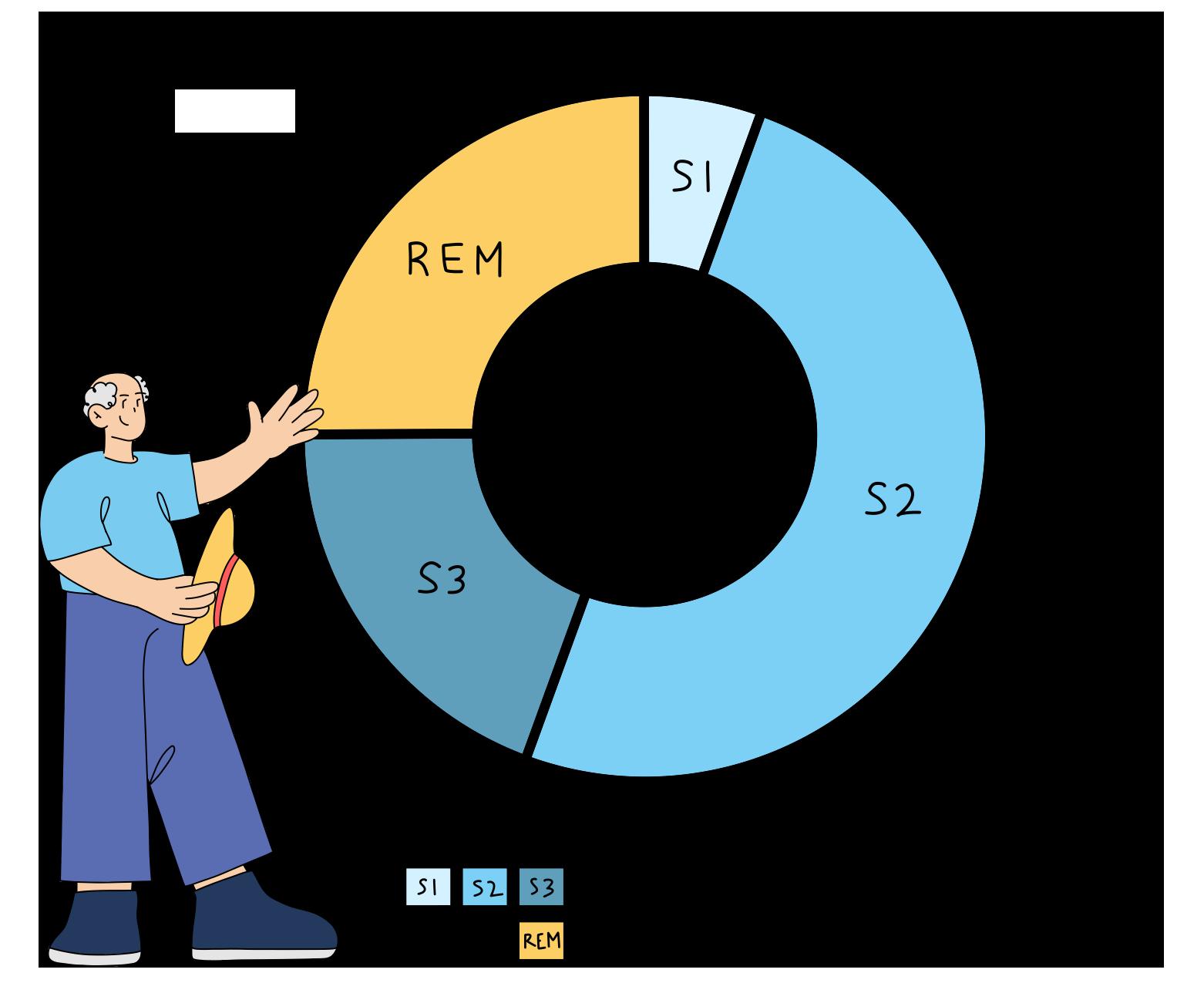
Sleep is a basic human need and is critical for your well-being and your physical and mental health. While you sleep, your body repairs and restores itself. Your brain may process what you learned during the day and form long-term memories. High-quality sleep may also strengthen your immune system.1
While you sleep, your body cycles through two types of sleep. First, non-rapid eye movement (NREM) sleep progresses from light to deep sleep. Then you enter rapid eye movement (REM) sleep, when most dreaming happens. Each complete sleep cycle lasts about 90 minutes.2
Good sleep includes both quantity (how long you sleep) and quality (how well you sleep). You get quality sleep when your sleep cycles are complete and uninterrupted. The amount of sleep you need changes over your lifetime.1
Wearable devices can track your sleep patterns over time but cannot provide a clinical assessment like you would get from a doctor.3 A doctor can assess your sleep quality using questionnaires and sleep diaries or with an overnight test at a sleep clinic.4
Good sleep is important for well-being 5 because it benefts mental and physical health, mood, and performance.1 It lowers risk of high blood pressure, cardiovascular disease, obesity, stroke, and diabetes.6 Good sleep can lengthen your life.7
A healthy diet, exercise, and good sleep habits can improve the quality of your sleep.8 To establish good sleep habits:9
Every day
• Go to bed and wake up at about the same time.
• Get regular exercise, but avoid it within 2–3 hours of bedtime.
• Do not nap more than 20 minutes.
• Get at least 30 minutes of sunlight or bright indoor light, preferably within 5 minutes of waking. When you awaken, open your curtains to let sunlight in.
Close to bedtime
• Avoid large meals, alcohol, and cafeine 2–3 hours before bed.
• If possible, avoid medicines that disrupt sleep or ask your doctor if you can take them earlier.
• Put away electronics to reduce mental activity and avoid blue light, which makes the brain think it is daytime.
• Write down your worries to clear your mind.
• Relax with a hot bath, reading, deep breathing, or meditation.
While sleeping
• Keep your bedroom quiet, dark, and at your preferred temperature.
• Use a comfortable mattress and pillow.
• Do not lie awake in bed for more than 20 minutes. Get up, do something that makes you drowsy like reading in dim light in another room, and then return to bed when sleepy.
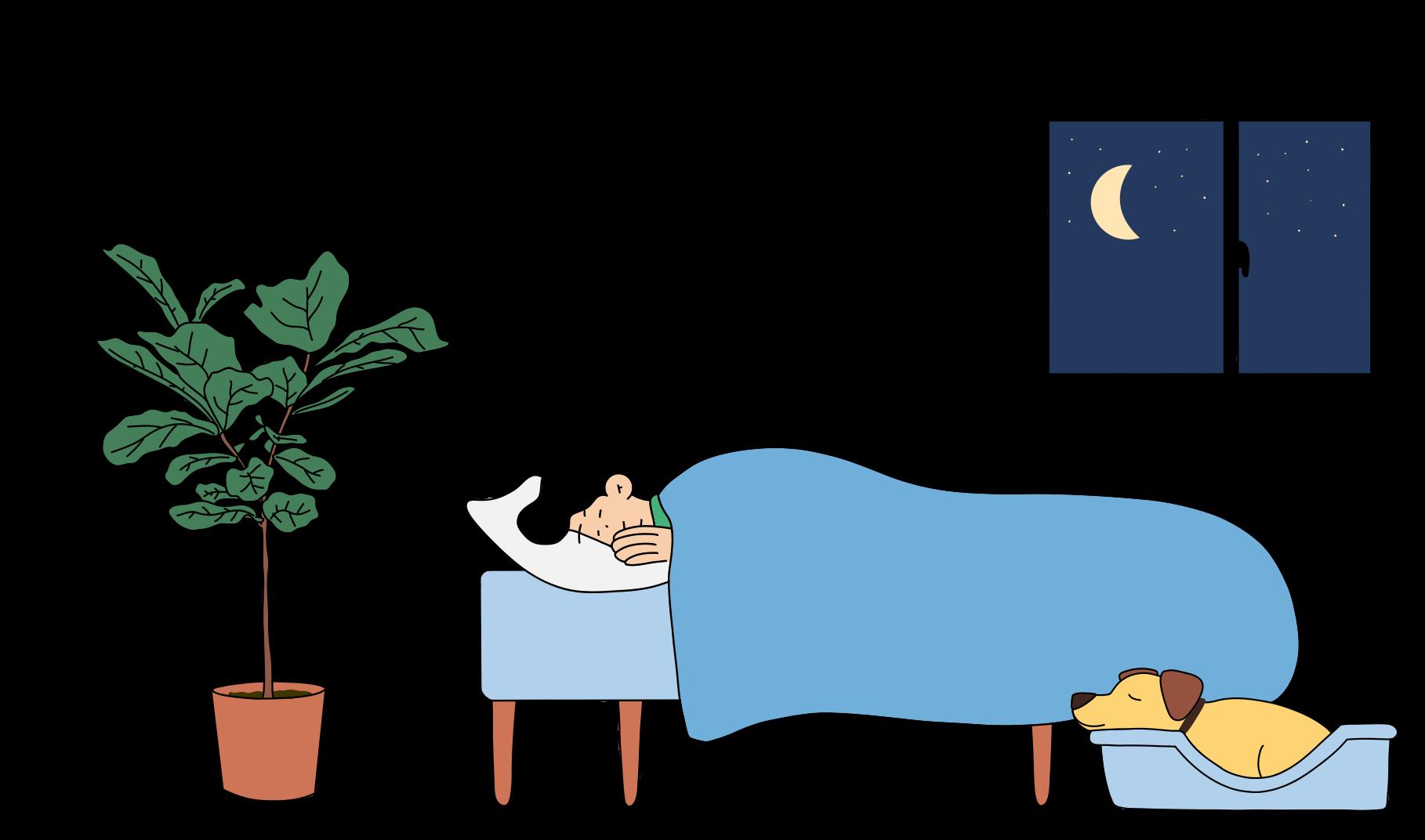

Spending time in nature has a positive impact on your physical, emotional, and cognitive well-being.1,2 In fact, some physicians prescribe spending time in nature to their patients.3
WHAT DOES EXPOSURE TO NATURE MEAN?
Exposure to nature means being outside and enjoying fresh air, sunlight, water, and wildlife in green or blue (water) spaces. Do not be in a rush. Slow down and observe nature with all of your senses. Watch the light on the water, smell the fowers,4 listen to birdsong, or feel the soil while working in your garden.5
Any amount of time in nature is helpful. A study of 20,000 people found that spending 120 minutes per week in nature was associated with better health and well-being.6 If you cannot get outside, you can bring elements of nature like plants into your home or ofce.7
HOW DOES TIME IN NATURE AFFECT YOUR WELL-BEING, BODY, AND MIND?
Being in nature benefts your physical and mental health,1 including cognition and memory.8 It improves well-being, including your sense of purpose and sense of self.9
Connecting with nature helps alleviate stress, improve sleep, reduce anxiety, and improve mood.3 Being outdoors decreases cortisol, a chemical your body produces in response to stress,10 and boosts your immune system.11 Being in green spaces is also linked with slower biological aging.12
If you are spending fewer than two hours per week outdoors, try these ideas.
Try different types of activities



Walking/hiking
Biking
Swimming



Kayaking
Gardening
Outdoor picnics
Exercise outdoors. Instead of going to the gym, enjoy a walk, bike ride, or exercise class outside.1
Bring nature indoors.13
• Decorate with natural colors.
• Display nature photos.
• Grow indoor plants.
• Bring in natural aromas.
• Play nature sounds like a river fowing or birdsong.
If you have diffculty walking, sit outside and enjoy nature with all your senses, or try sketching, photography, or painting.3



Visiting parks
Outdoor yoga or meditation
Camping
Learn about your surroundings. Become an expert on the trees, plants, animals, or birds in your backyard, neighborhood, or region.5
Grow your own food. Try growing herbs, vegetables, or fruit.14
Do not let winter keep you inside. Take up a winter sport15 or birdwatching.5
If you live in a city, visit your local urban or community gardens, parks, or green roof tops.1 Create your own mini indoor garden.13

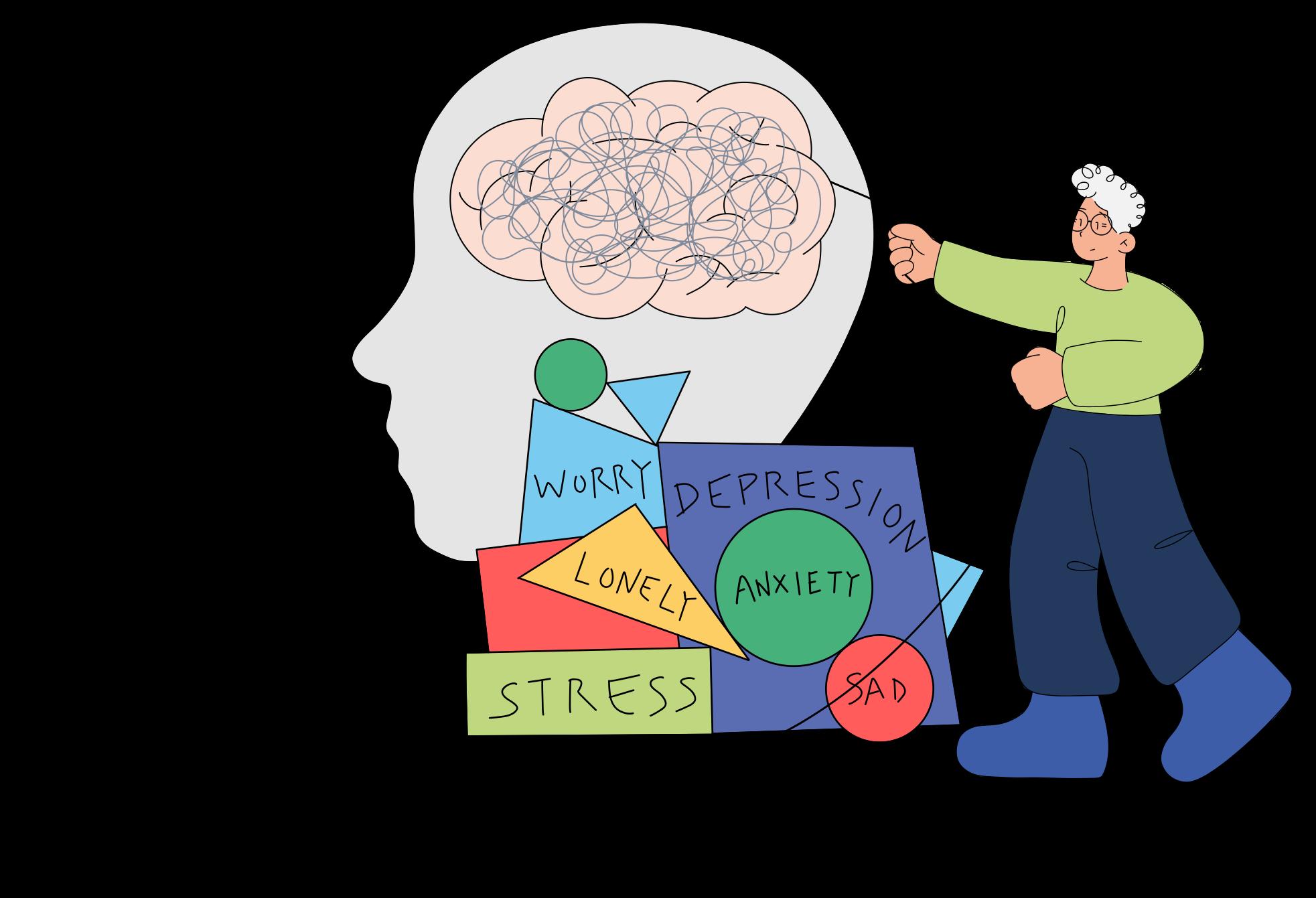
Stress, anxiety, and depression afect your emotional, psychological, and social functioning and are deeply connected to your well-being. These conditions impact how you feel, think, act, make choices, and relate to others.1
WHAT IS STRESS?
Stress is a physical and psychological response to problems or feelings that you perceive as challenging or threatening.2 Managing stress efectively may help prevent it from becoming long-lasting anxiety or depression, which can decrease well-being.3
WHAT IS ANXIETY?
Anxiety is a feeling of worry or apprehension, the cause of which is not always clear. Anxiety can leave you feeling restless or irritable and make it difcult to concentrate or sleep. Anxiety is sometimes a normal response to perceived threats. However, if it happens so often that it interferes with your daily life, your doctor may consider it an anxiety disorder.4
WHAT IS DEPRESSION?
Depression is a mental health condition that can make you feel sad, empty, or uninterested in daily activities. It can range from mild to severe. Sometimes, depression leads to mental and physical changes that make it hard or impossible to do daily tasks.5
WHY ARE THESE CONDITIONS IMPORTANT TO YOUR WELL-BEING?
Anxiety, stress, and depression can have profound efects on well-being3 by causing chronic physical illness,6 difculty in relationships, reduced productivity, and diminished quality of life.7 Preventing or managing anxiety, stress, and depression can improve your well-being by increasing your positive emotions, resiliency, and capacity for enjoying life.1
Maintain your physical health. Having healthy habits to strengthen your physical health is critical to mental health and well-being.4 Regular exercise, a balanced diet, and sufcient sleep can help you avoid and/or manage depression.8-10
Seek support from your social network. Consider talking to friends and family about difculties you are experiencing. This can help you feel less alone, which is associated with increased resilience and mental and physical health.11
Pursue hobbies and interests. Engaging in activities that you enjoy can give you a sense of pleasure and accomplishment and provide a break from daily stressors. This can increase your ability to cope with stress and decrease anxiety and depression.12
Cultivate resilience. Change your mental narrative. For example, think about a positive aspect or result of a challenging situation.13 Reframing your thinking in this way can help you feel more in control as you navigate the ups and downs of life.14 Similarly, fnding ways to generate positive emotions, such as spending time with people who make you feel good or practicing self-compassion, can help you build resilience.13
Revisit happy memories. Thinking about and sharing stories of your happy times can improve your mood and mental well-being and ease depression.15
Limit your use of alcohol and other substances. Drinking or using illicit drugs may make you feel better temporarily. However, in the long run, it can worsen stress, anxiety, and depression.16 Relying on drugs and alcohol can also prevent you from using healthy strategies to improve your mental health.
Get professional help. If you often feel anxious or depressed, you may beneft from seeking treatment from a mental health professional.17
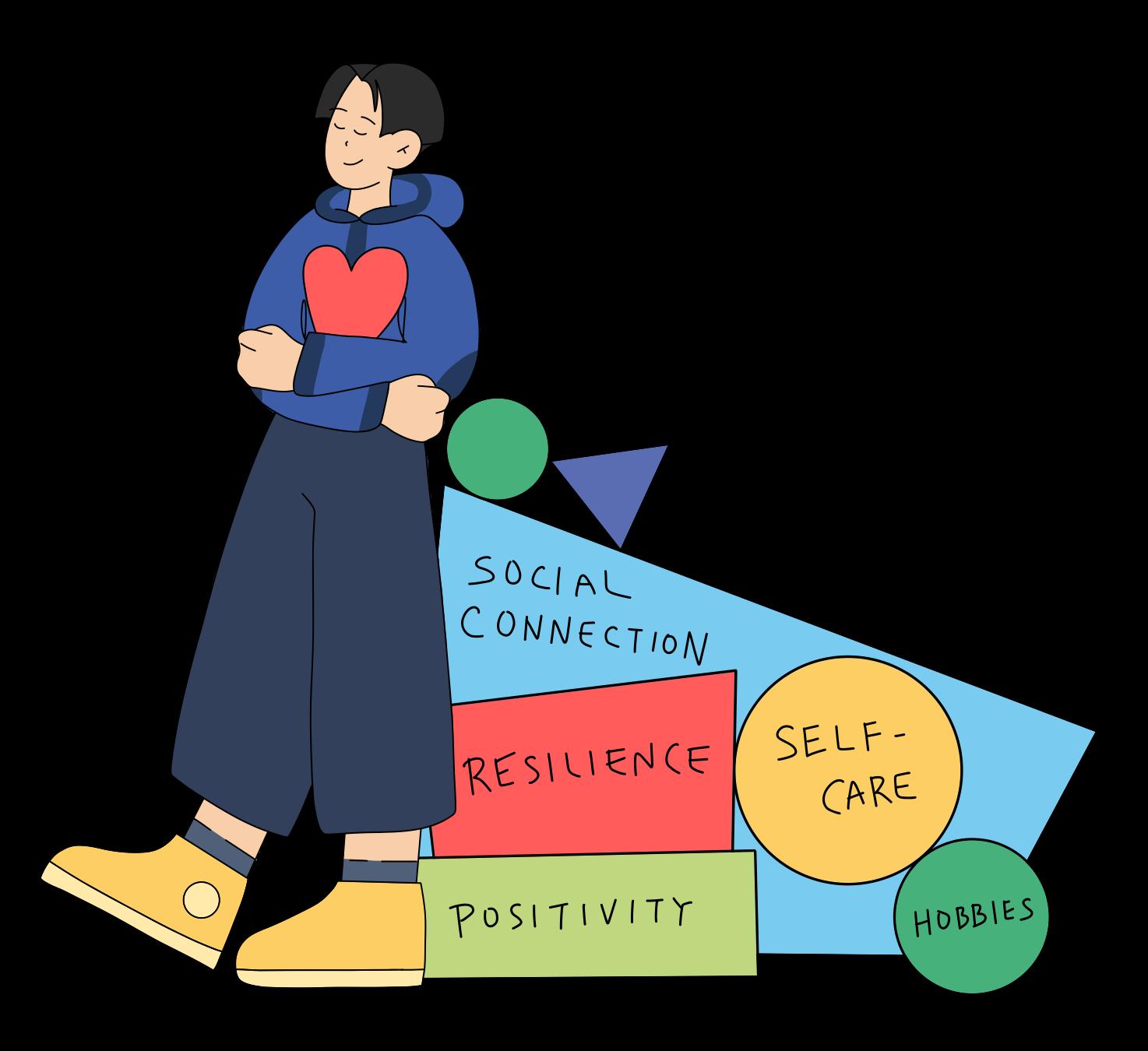

Contemplative practices focus your awareness on what you are doing, thinking, or feeling in the present moment without judging yourself, your situation, or others.1
Contemplative practices are mind and body exercises that help you stay present, feel connected to something bigger than yourself, and create a sense of being understood and safe.1,2 These practices include yoga, tai chi, deep breathing, and other activities when done with purposeful attention, such as gardening, walking, journaling, and participating in spiritual rituals such as prayers.
Contemplative practices also include meditation. One popular meditation technique is mindfulness, an intentional yet detached, focused awareness.
HOW DO CONTEMPLATIVE PRACTICES AFFECT YOUR WELL-BEING?
These practices encourage inner calm, contentment, and compassion for yourself and others.
They help you build an interior space in which your mental, emotional, and physical well-being can fourish.1,3
Contemplative practices may improve well-being by:1,3-5
• Enriching your sense of purpose and meaning
• Promoting positive emotions, energy, and concentration
• Slowing the intensity and speed of emotional reactions
• Strengthening resilience
• Reducing stress, anxiety, long-lasting pain, and symptoms of depression
• Lowering body-wide infammation and blood pressure
Do a body scan. Sit or recline in a comfortable position. Slowly scan the sensations in each part of your body, moving from your head to your toes.6
Unwind with movement. Try gentle stretching, tai chi, or mindful walking.7 To walk mindfully, notice how your body feels before, during, and after a walk. Pay attention to the sights, sounds, and smells around you and focus on deep, regular breathing.
Connect with nature. Practice focused attention in a natural environment. Visit a park or work in your garden.8 Notice small details and sensations, such as the activity of birds and insects, the smell of plants and earth, the breeze moving through the trees, and the sun on your skin.
Practice gratitude. Each day, list three people or parts of your life you are grateful for. Thank someone who has made a diference in your life in person or with a card, text, or call.9-11
Develop self-compassion.12 Imagine what you would say to a friend to encourage their self-confdence or to support them during a difcult time. Then, when you feel self-critical or overwhelmed, direct the same kind and compassionate language toward yourself.12,13
Try a mindfulness app. Headspace, Calm, and other mindfulness apps can teach you to meditate in short sessions and help you build a regular practice.14-17
Visit the Stanford Contemplation by Design website at med.stanford.edu/contemplation for more information about contemplative practices and activities.



The health and diversity of your gut microbiome can infuence your well-being and play an essential role in your overall health.
The gut microbiome is made up of the trillions of bacteria, fungi, viruses, and other microorganisms living in your gastrointestinal tract. It modulates digestion, nutrient absorption, immune system function, and other body processes.1
Scientists increasingly recognize the role the gut microbiome plays in brain function, well-being, and mental health.













The gut microbiome afects well-being in several ways via the “gut-brain axis.” Some gut microorganisms produce or afect brain chemicals that infuence how you feel.2 The gut microbiome can also afect the immune system and the amount of infammation in the brain and other parts of your body, which can infuence well-being.3
Having a richer, more diverse microbiome has been linked with many positive health outcomes,4 including greater well-being and better mental health.5










Maintain a diverse, balanced diet. Eat a variety of fresh fruits and vegetables, a moderate amount of animal protein (fsh and poultry), and a variety of naturally fermented foods like unsweetened yogurt.6 Limit sugar and artifcial sweeteners.7
Eat prebiotic and probiotic foods. Fiber-rich foods can act as “prebiotics” that feed our gut microbiome, keeping our digestive tracts healthy. Probiotic or fermented foods like yogurt, kimchi, sauerkraut, miso, and kombucha contain benefcial bacteria that can improve the health and diversity of your gut microbiome.8
Get regular, moderate exercise. Physical activity increases the diversity and health of the gut microbiome, as well as well-being.9
Spend time in nature. Engaging in outdoor activities and coming into contact with microorganism-containing soil can increase the diversity of your gut microbiome.10
Manage stress. The brain can infuence the gut through the gut-brain axis. Chronic stress can decrease the health of your digestive tract and gut microbiome.11 Manage stress to keep your gut microbiome healthy.
Avoid unnecessary antibiotics. While antibiotics are sometimes medically necessary, they deplete your gut microbiome.12 Use antibiotics only when prescribed by a healthcare professional.
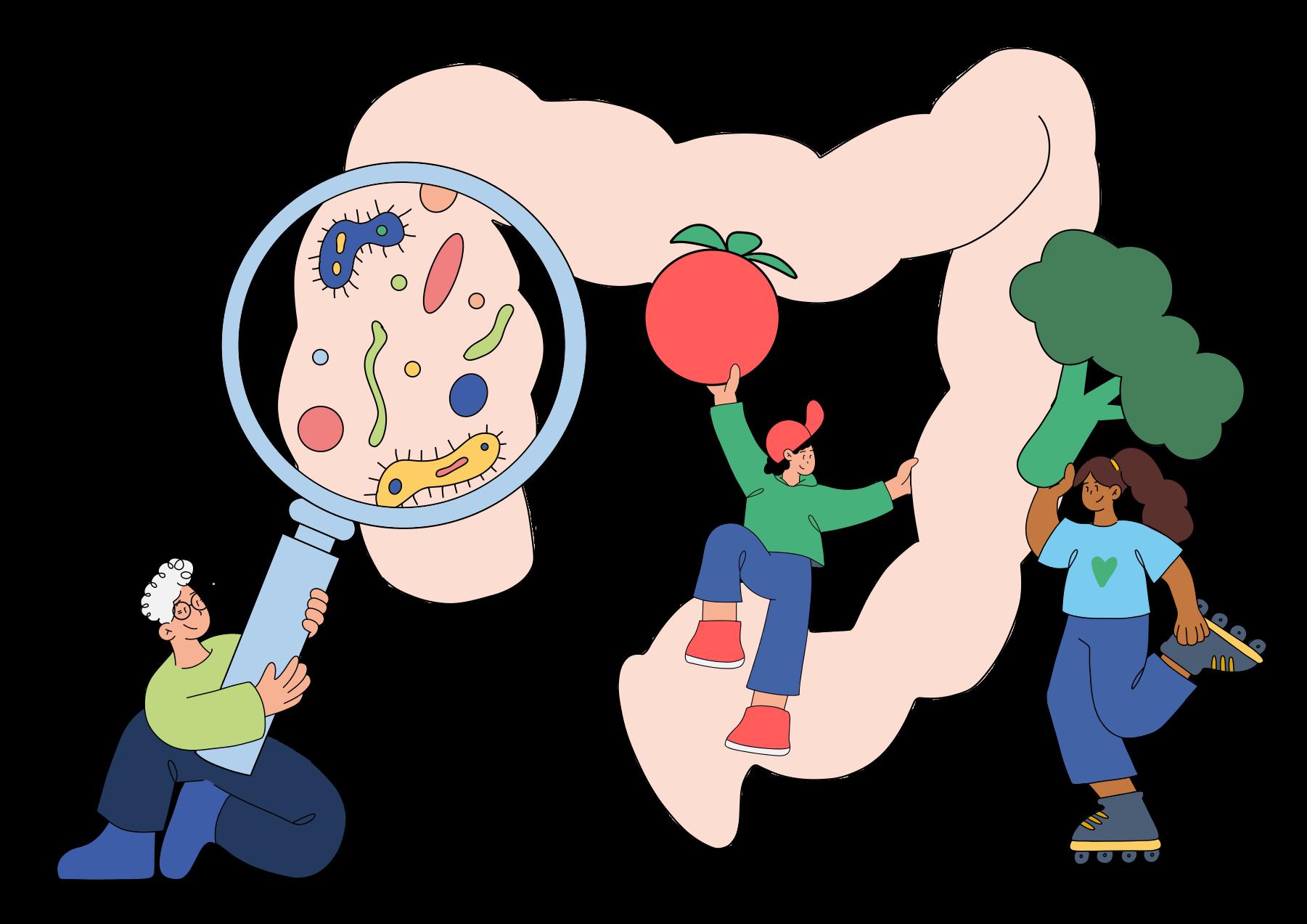

Traditional Chinese Medicine (TCM) has been practiced for thousands of years in Asia. It classifes people into nine diferent body constitutions based on their individual physical, physiological, and psychological characteristics. These body constitutions indicate individuals’ likelihood of having or getting illnesses.1-5
ARE
Of the nine TCM body constitutions, the Balanced constitution is considered most healthy, while the remaining eight are unbalanced in some way. Each constitution has unique characteristics.
• Balanced: Physically healthy and ft, energetic, emotionally stable, optimistic, adaptable
• Qi Defciency: Easily fatigued, has shortness of breath, catches colds easily, timid
• Yin Defciency: Often feels warm with red cheeks, dislikes hot and dry weather, impatient
• Yang Defciency: Often feels cold, dislikes cold and humidity, introverted
• Phlegm Dampness: Overweight, lethargic, sweats a lot, dislikes humidity and rain, patient
• Damp Heat: Oily skin, bad breath, dislikes humid warm weather, gets angry easily, extroverted
• Blood Stasis: Poor circulation, dull complexion, dislikes cold or windy weather, forgetful, irritable
• Qi Stagnation: Thin, dislikes rain, sad, timid, stressed, depressed, anxious
• Allergic: Allergies or sensitivity to foods, drugs, scents, change in seasons
WHAT IS THE RELATIONSHIP BETWEEN TCM BODY CONSTITUTIONS AND WELL-BEING?
WELL assesses TCM body constitution using a 54-item clinically validated survey that has been completed by more than 10,000 WELL China study participants.6 These participants also took the WELL survey to assess their WELL scores. Those with the Balanced body constitution had higher well-being compared to those with unbalanced body constitutions. Individuals with the Qi Stagnation body constitution had the lowest well-being.
Here are some ways you can improve your physical and psychological health, and thereby your well-being, based on your body constitution.
Balanced: Continue to exercise regularly and eat a balanced diet.
Qi Defciency: Be more optimistic and open-minded. Reduce stress. Choose gentle exercise.
Yin Defciency: Practice mindfulness. Avoid competitiveness.
Yang Defciency: Reduce negative emotions and focus on positive aspects of your life. Exercise outdoors.
Phlegm Dampness: Be more proactive. Exercise regularly.
Damp Heat: Calm your mind. Regulate emotions and minimize anger. Do highintensity exercise.
Blood Stasis: Cultivate a positive and optimistic outlook. Do high-intensity exercise.
Qi Stagnation: Seek happiness and cultivate a cheerful, open-minded personality. Exercise and travel more.
Allergic: Exercise indoors to avoid pollens.
If you are interested in learning about your TCM body constitution, you can take the TCM survey on the WELL website after you take the WELL survey at med.stanford.edu/ wellforlife.
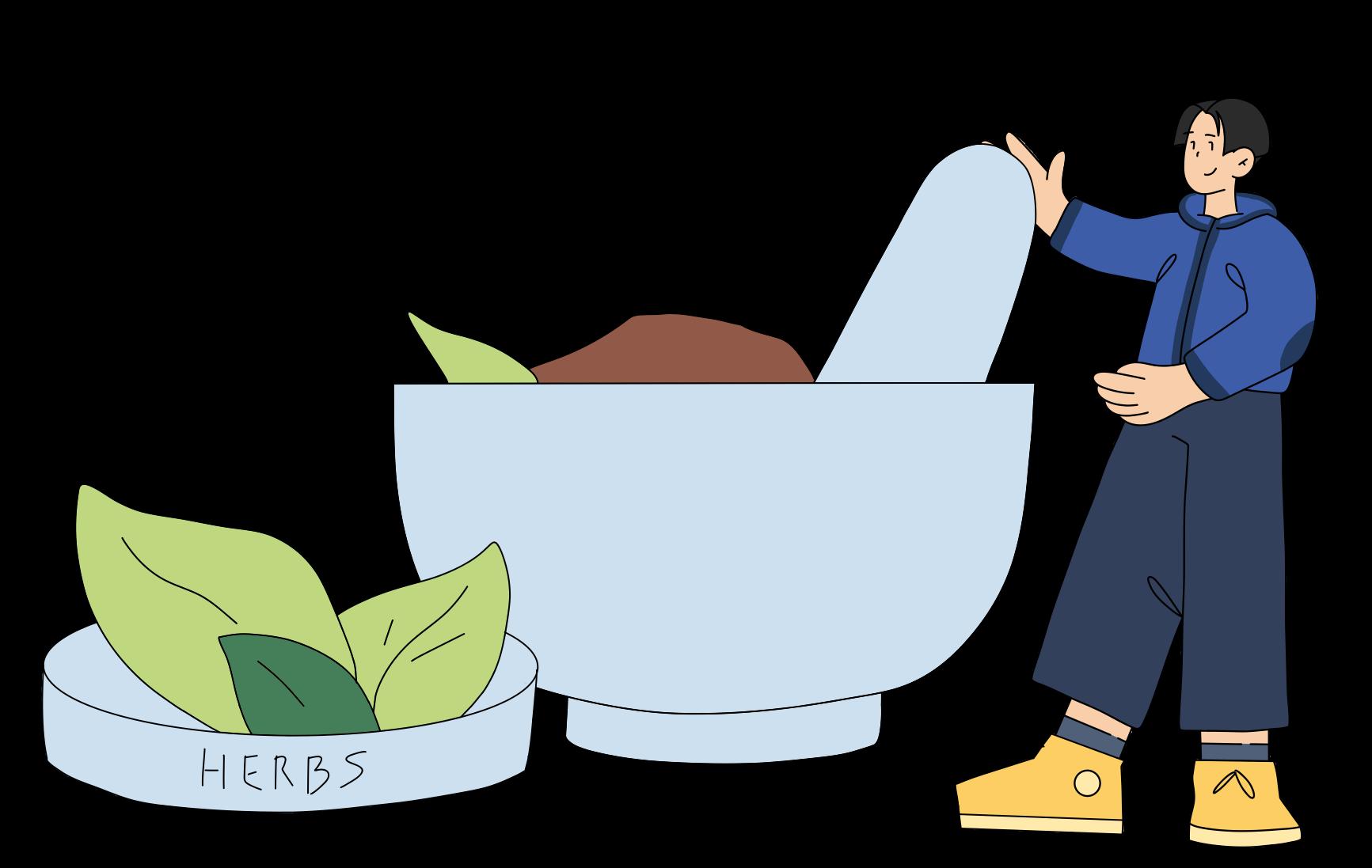
CINDY “I joined the Stanford WELL for Life initiative because I was inspired by Ann Hsing and the mission-driven goals around advancing our understanding of well-being. I continue to participate in the program in part because it feels like an opportunity for us to all come together to build a scientifc understanding of wellness.”
CYNTHIA “I wanted to be part of a group that was helping to provide information that could lead to a better understanding of living a healthy life and being as well as possible. I also like to give back to my community in various ways and joining research studies, like WELL, is one easy way to give back.”
CHRISTOPHER “I joined WELL because I believe the Stanford team that runs WELL has accurate, objective, evidence-based advice that I can trust about diet, physical activity, sleep, and more. And I joined WELL for the opportunity to contribute to the science of well-being as a citizen scientist.”
JUNE “WELL teaches me to think critically about how the decisions I make every day culminate into the life I want to live, and of the importance of taking care of my mind and body through healthy diet, exercise, contemplative practices, and connecting with others.”
STEPHANIE “I took the initial survey a couple of years ago in late fall (pre-New Year’s resolutions) and it was a wonderful benchmark of my strengths as well as opportunities to enrich my health even more. There is no better gift we can give to ourselves, our families and our communities than a holistic approach and commitment to living our best life.”
There is much more to learn about patterns of well-being and factors that afect well-being in people of diferent ages, educational backgrounds, ethnicities, cultures, occupations, and geographic regions. While carrying out literature review for this guide, we found that the currently available research has some important limitations. Few studies have included large populations with comprehensive assessments of physical and mental health, have tracked changes in participants’ well-being over time, or have been designed to test diferent ways to improve well-being.
New studies are needed to generate scientifc data-driven insights to help people improve their well-being. WELL has a solid foundation of data for continued research that could address most of the limitations mentioned above. We have over 32,000 participants who have completed WELL surveys. Of these, over 22,000 have provided biological samples, such as blood, stool, and saliva.
:
• Continue to analyze WELL survey data to fnd new clues about factors related to well-being, especially focusing on how cultural diferences afect perceptions of well-being.

• Conduct biomarker studies to understand the biological basis for the links between certain factors and well-being.
• Design and carry out studies to test the efectiveness of diferent factors in bolstering well-being.
• Use technology such as wearable devices and a well-being app to fnd out if tracking heart rate, sleep, physical activity, and exposure to nature can be useful for measuring and monitoring stress, mood, mental health, and well-being.
• Continue to create and publish updated well-being guides in multiple languages.
• Develop online training to enhance education and community engagement around well-being.
• Expand collaborations into other cultures and countries to increase the breadth and depth of WELL.
The content for this guide was developed from WELL’s research and other academic studies.
The Stanford WELL for Life (WELL) study seeks to understand, measure, and promote multiple dimensions of wellbeing—the synthesis of each person’s biological, psychological, and spiritual experiences. WELL’s multidisciplinary team of experts has studied over 32,000 participants from the U.S., China, Taiwan, Singapore, and Thailand.
The WELL research team initially defned domains of well-being using responses from qualitative interviews with over 400 individuals. They coded keywords from these responses and identifed common themes to establish the well-being domains. Based on these domains, they developed a 42-question survey. The survey was then used to interview WELL participants, and statistical analysis was conducted to confrm the validity of the domains.
WELL used responses to the survey’s 42 questions to calculate a score for each of the domains and then averaged the domain scores to obtain a total WELL score for each individual in the study.
WELL carried out statistical analyses to identify links between WELL scores and many factors described in this guide.
The guide’s tips to strengthen well-being and to manage factors linked to well-being are based on published scientifc research and reviews by our content experts.
You can access the newsletters at med.stanford.edu/wellforlife/ well-resources/newsletters.

You can assess your wellbeing by scanning the QR code to the left or visiting our portal at wellforlife-portal .stanford.edu/login.

Each section has a list of references that you can access by scanning the QR code to the left or by visiting the References webpage at med.stanford.edu/wellforlife/reference.
CONCEPT
Elizabeth Delzell, ScD
Ann Hsing, PhD
COORDINATION
Ann Hsing, PhD
Patty LaDuke, MS
Yuning Liu, MS
WRITING
Stephanie Cho, MS
Emily Delzell, BA
Catherine Heaney, PhD
Patty LaDuke, MS
Rebecca Lipscomb, MA
Yuning Liu, MS
April Myers, MS
Yi-Hsuan Wu, MS
Xiaoyan Zhang, PhD
FINAL REVIEW
Elizabeth Delzell, ScD
Ann Hsing, PhD
ILLUSTRATIONS
Jan Buchczik, BA
Julianna Hsing, MS
LAYOUT DESIGN
Julianna Hsing, MS
CONTENT EXPERT REVIEW
BEHAVIORAL SCIENCE
Lisa Henriksen, PhD
CONTEMPLATIVE PRACTICES
Benjamin Chrisinger, PhD ENVIRONMENT
Elizabeth Delzell, ScD
GUT MICROBIOME
Emeran Mayer, MD, PhD
NATURE
Gretchen Daily, PhD NUTRITION
Christopher Gardner, PhD
Marion Lee, PhD
PHYSICAL ACTIVITY
Abby King, PhD
PSYCHOLOGY
Molly Bowdring, PhD
Catherine Heaney, PhD
David Lounsbury, PhD
Judith Prochaska, PhD SLEEP
Clete Kushida, MD, PhD
TRADITIONAL CHINESE MEDICINE
Ji Wang, MD
Karen Wu, MA, MS
WELL-BEING
Catherine Heaney, PhD
Ann Hsing, PhD


To improve and sustain health and well-being around the world
To advance the science of well-being
If you would like to help us in our pursuit of wellness for all, you can make a taxdeductible donation online at give.stanford.edu. In the “Special Instructions/Other Designation” section, please include “WELL for Life: PTA#GHH-JC-1250201-100.”
For more ways to give, visit our website, med.stanford.edu/wellforlife, or email wellforlife@stanford.edu.
All gifts to Stanford University are tax deductible in the United States to the full extent provided by law.
Foundational funding for the Stanford Wellness Living Laboratory (WELL) was provided by Amway via an unrestricted gift through the Nutrilite Health Institute Wellness Fund. In 2023–2024, Amway provided additional support for the curation and design of this well-being guide.
© 2024 The Board of Trustees of the Leland Stanford Junior University. All rights reserved.
wellforlife@stanford.edu
med.stanford.edu/wellforlife
